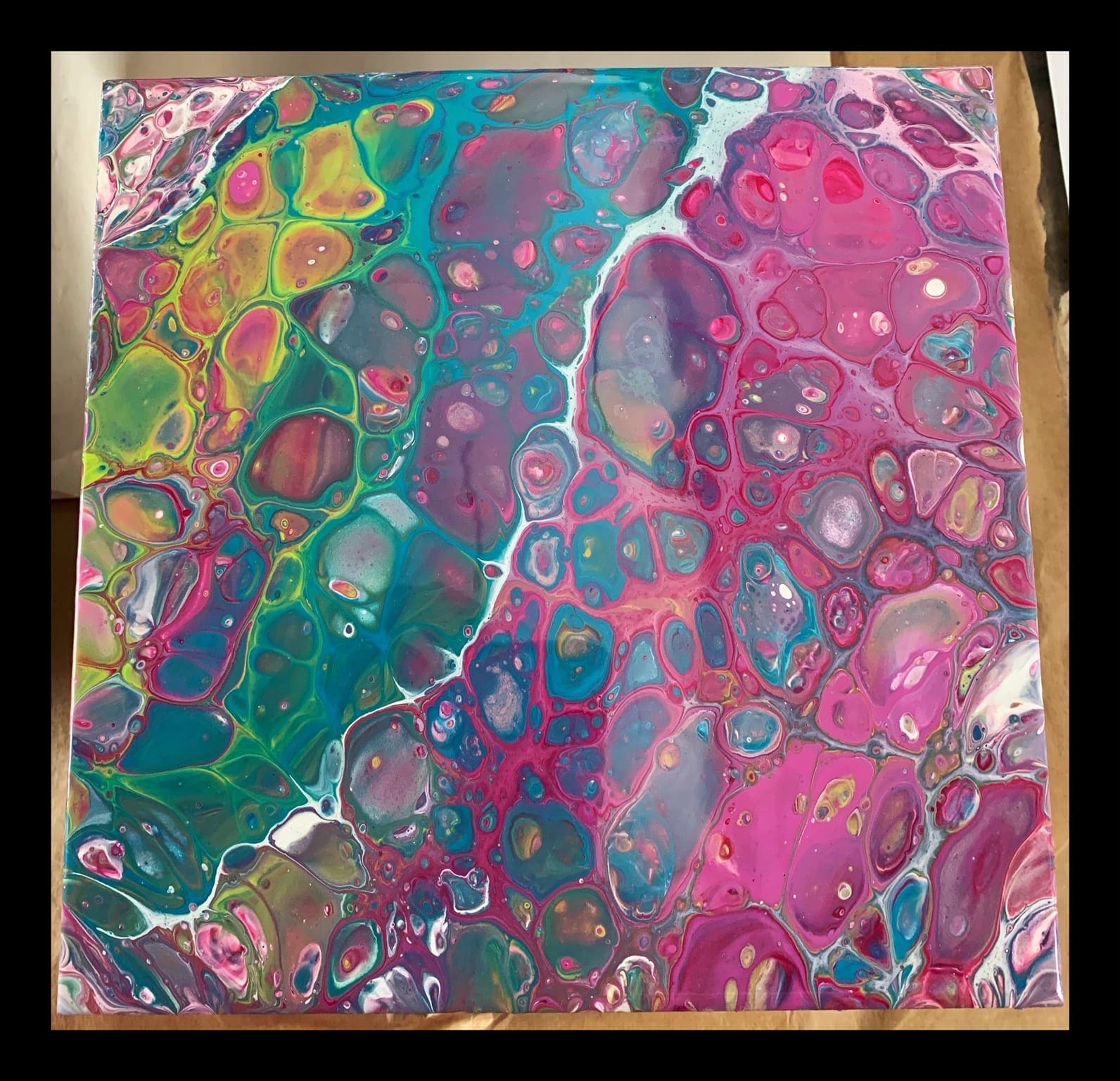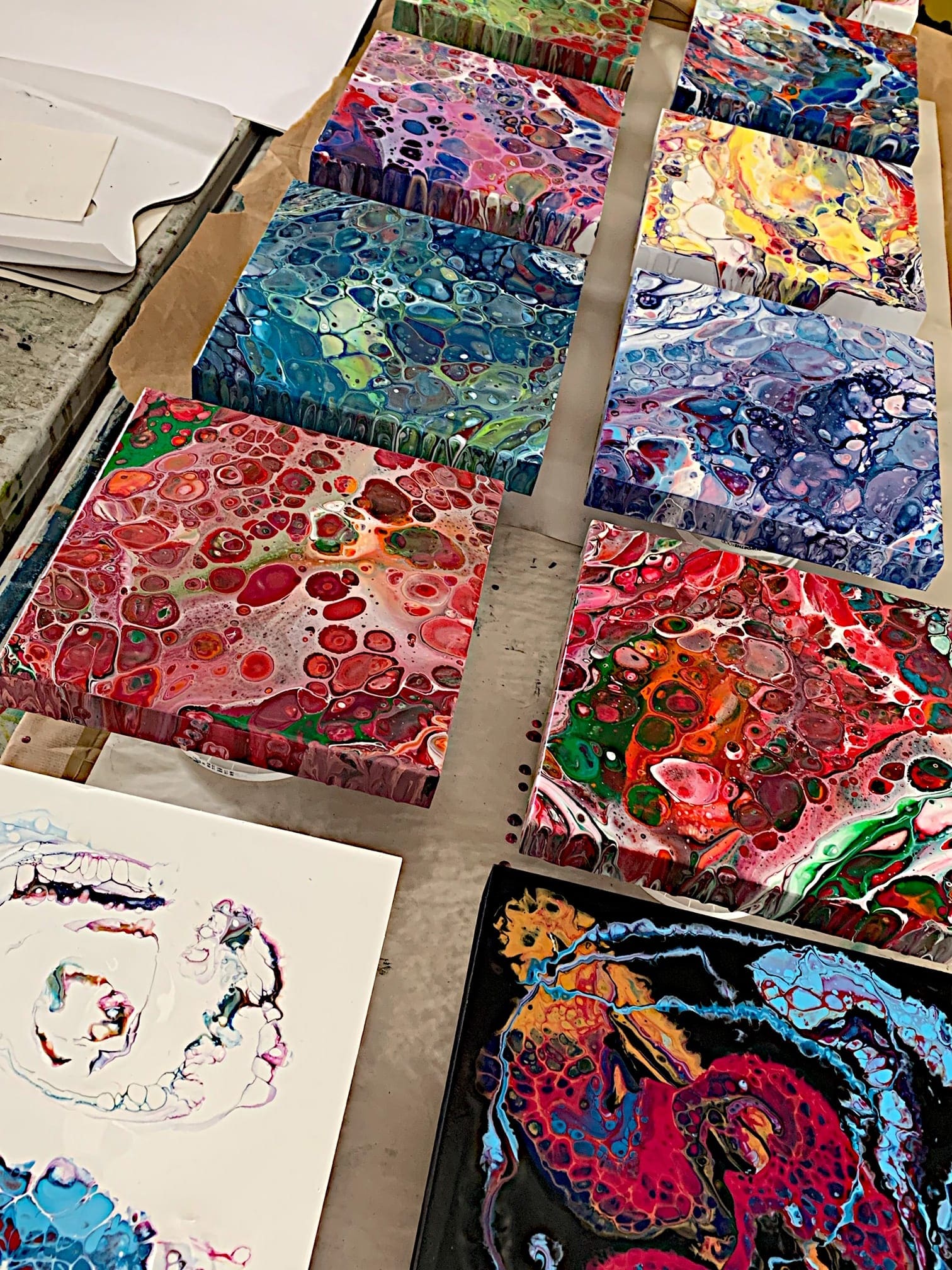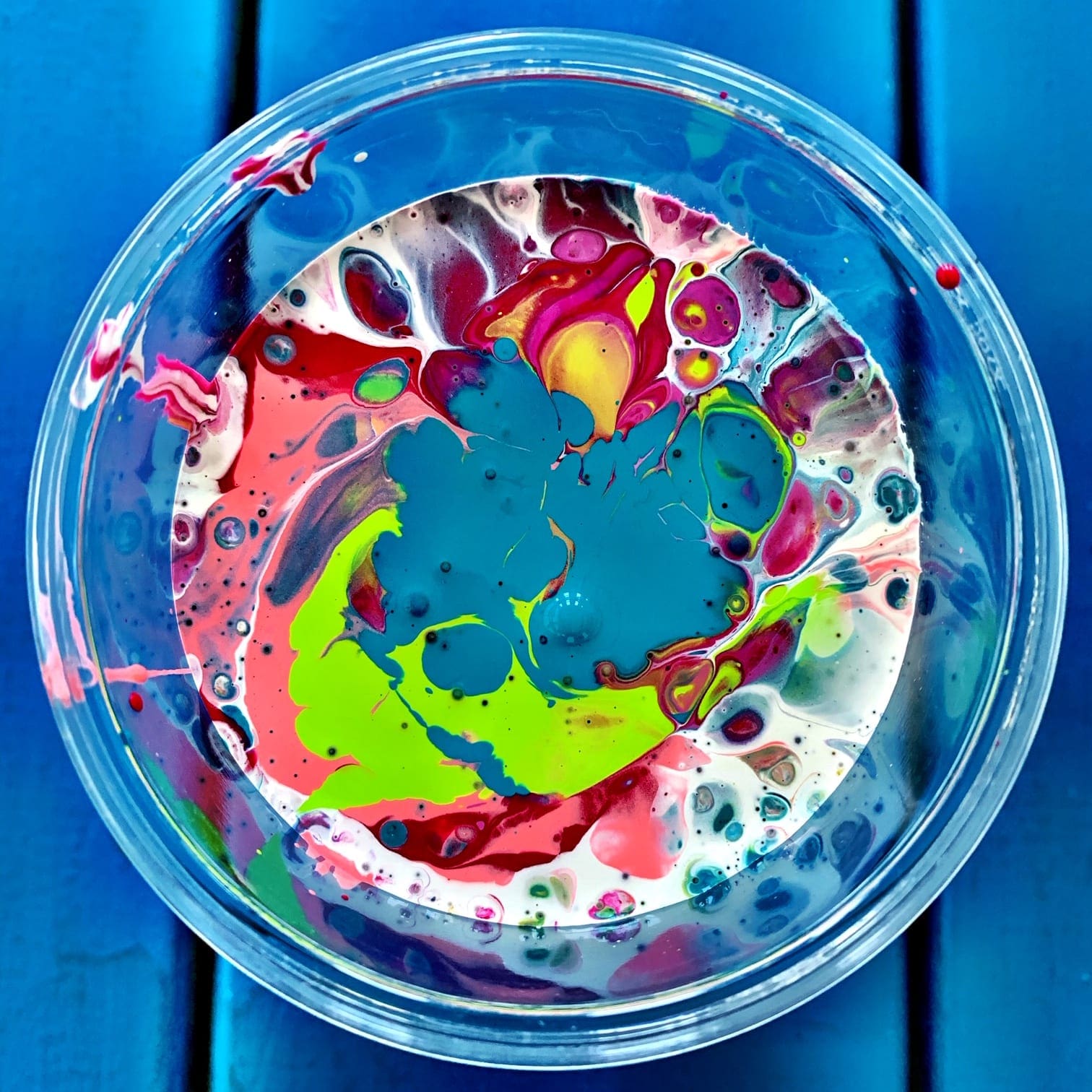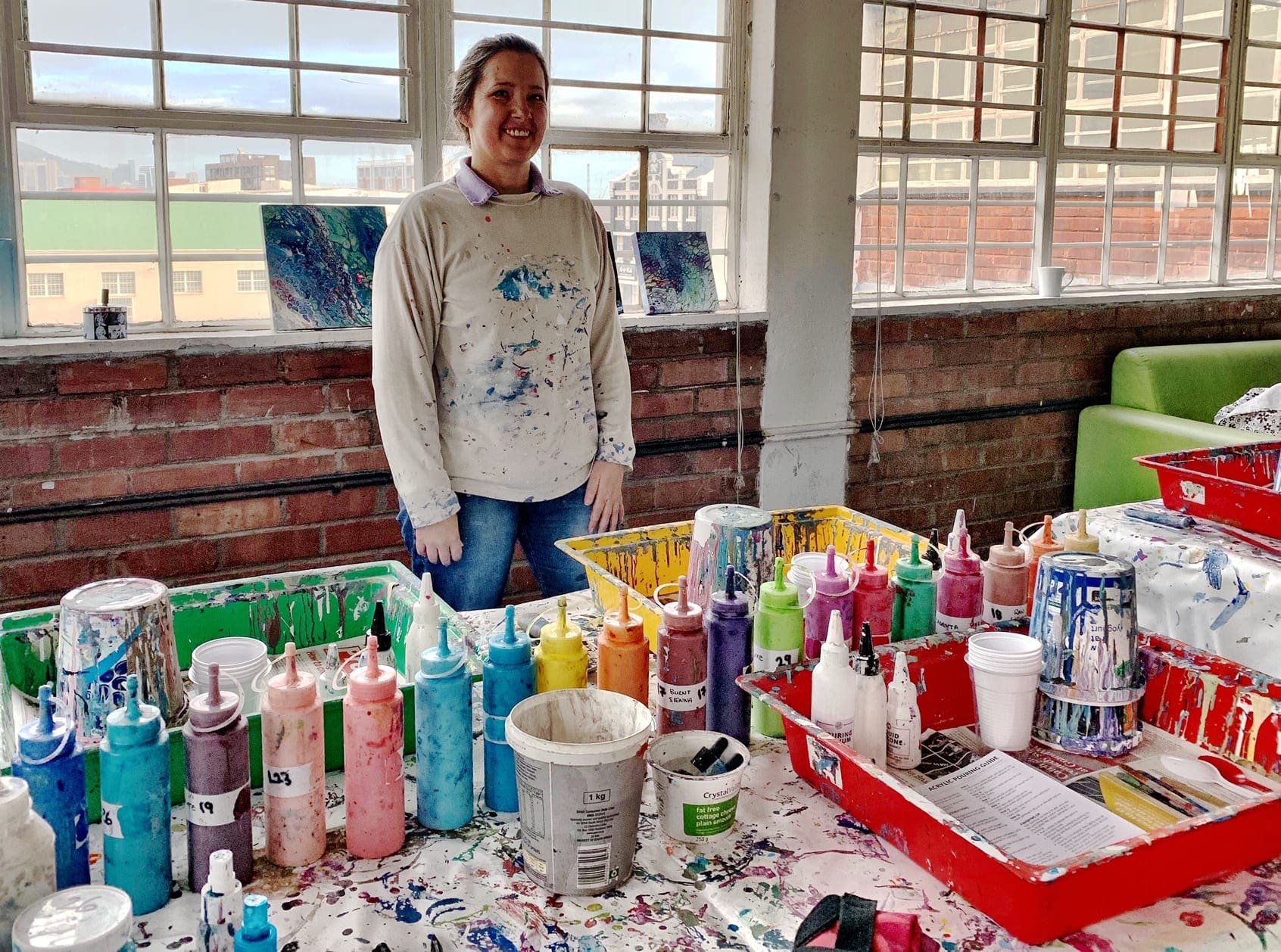MY relationship with making art is complicated. I love the idea and concept of creating paintings and drawings but have zero natural talent.
Science very kindly provides us with several reasons why we should do it, even if we’re rubbish at it, and there are dozens of articles on the internet to prove this theory. In a constant triumph of hope over experience, I have plenty of art materials at my disposal but usually claim to be “too busy” to actually paint anything.
Last year, I did a four-part oil painting course at Bright Studio in Woodstock, with surprisingly satisfying results (read about it here). This had a lot to do with Anthony de Klerk, who teaches the course, being at my elbow for most of the time. Sensing my frustration, and desire to make pretty things, he suggested I could go abstract. “Try acrylic pouring,” he said.
It’s been a long time but finally one of these Saturday morning classes coincided with me being in Cape Town, and I leapt at the opportunity. The workshops are hosted by Liesel Roux of Fyrebird Creations, and she was adamant that anyone with control issues should put them aside. In fact, at one stage she made us all do breathing exercises to minimise any anxiety about what would happen. This was not optional.

This sounds a little scary but the first thing you need to know about acrylic pouring is that, even if you’re familiar with the techniques, will pretty much come out however it pleases. You can guide the paint, sure, but a slip of the wrist can yield unexpected results. There were six of us that morning, using various colour combinations, and every single canvas – 12 in total – was different, and gorgeous.

My friend Tamar, who is a brilliant artist (tattoo and other media), warned me it would be messy, and advised me to listen closely to Liesel and follow all her steps. Liesel confirmed this by telling us to stay with her, and not rush ahead.

We each had a pouring station and access to lots of lovely paint. To do this type of art, you need to mix the paint with a pouring medium, and you need silicone (because oil and water don’t mix and that’s how you get the “cells” in the painting). Liesel showed us how to do this, but the paints we could use were already mixed. We selected five colours, prepared our canvasses, and hoped for the best.
The first pour was simple; the cup of colours was placed in the centre of the canvas and lifted in one sweeping motion so all the paint spread more or less equally in every direction. For the second pour (the one we had to do the deep breathing for), the cup was dragged in a circular pattern from a corner of the canvas, lifting slightly as we went. Liesel was there to guide us every painstaking millimetre of the way, offering advice, tips and tricks – but always emphasising it was our art.

It’s definitely an ooh and aah experience. I was already excited seeing the colours merging and mingling in the cup, but that first moment as it all rushes out is amazing. I was delighted with the results, and loved getting paint all over my apron, hands and even my face. Naturally, I bought a whole bunch of Liesel’s products so I can make more at home, just as soon as I have time. I also like that these canvasses can be displayed any way up, so if you want to buy one, I won’t be offended by how you hang it.

For more information, click here, or call Liesel directly on 060 641 2829, email [email protected] or go to her website here.

PHOTO CREDIT: BIANCA COLEMAN © (except featured image)
